Search Results for Tag: Climate
Arctic Council – 20 years in a warming world
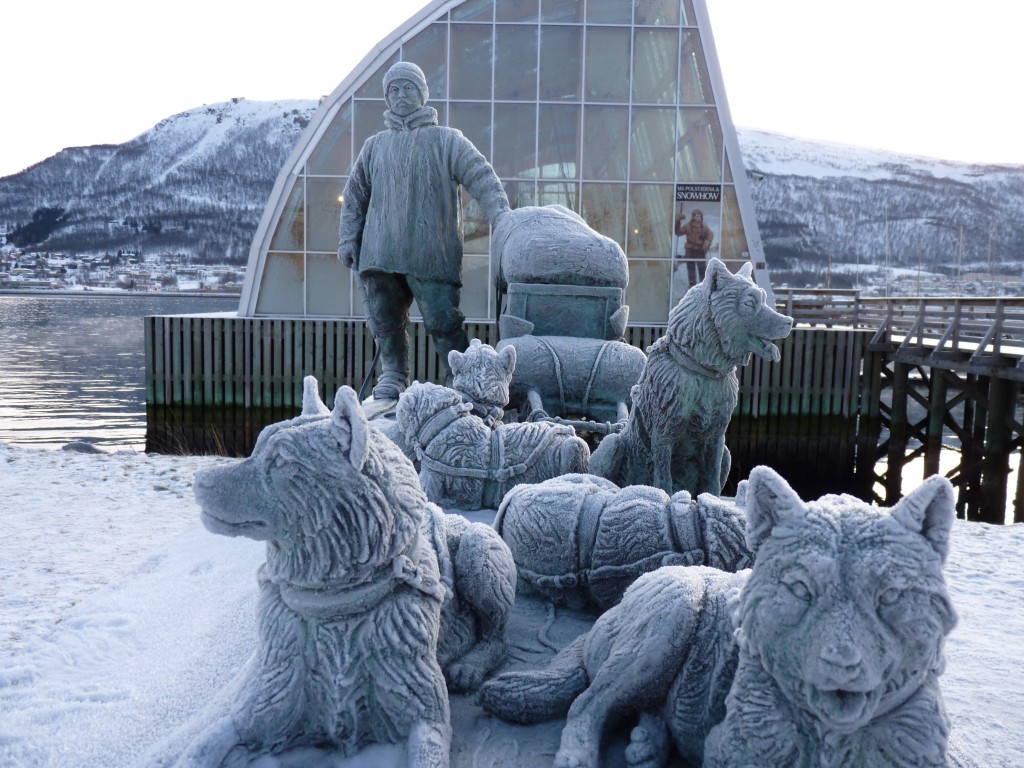
When Norwegian polar explorer Helmer Hanssen travelled in the early 20th century, the Arctic was a very different place. Statue in Tromso, close by Arctic Council headquarters. (I.Quaile)
20 years does not really seem like a long time. But when it comes to climate change in the Arctic, the last 20 years have brought more change than centuries gone by.
After the warmest winter in the Arctic since records began, the sea ice has declined to its second-lowest level ever. And the “second-lowest” tends to divert attention from the fact that the sea ice cover has dwindled to nearly 2.56m sq km less than the 1979 to 2000 average. That’s the size of Alaska and Texas combined.
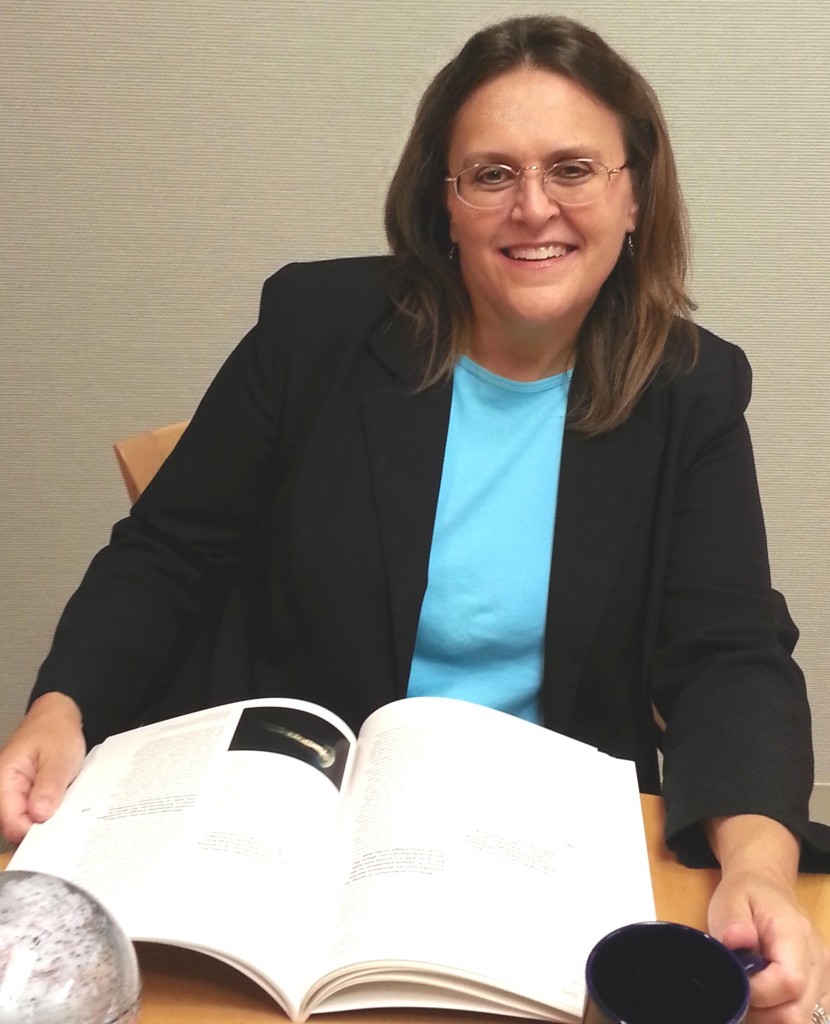
Julia Gourley, US Senior Arctic Official, has a background in environment policy. (Courtesy Arctic Council)
So the Arctic Council is celebrating its twentieth birthday at a time when concern over the impacts of planetary warming on the high north could hardly be greater.
I had the chance to interview Julia Gourley, the US Senior Arctic Official on the telephone ahead of the birthday. The US, of course, currently holds the two-year chairmanship of the body. I asked her how the Council had changed over the past 20 years.
“In the early days the Arctic state focused almost exclusively on environmental protection and science issues. But over the 20 years the countries have shifted the focus a bit. Certainly we still spend a lot of time trying to understand the environmental change that’s been going on. We spend much more time now on sustainable development issues, which in the Council generally refer to issues that affect the people of the Arctic, in particular the indigenous people. We’ve learned a lot in 20 years about the people who live there and the challenges they face.”
And those challenges are increasing all the time, especially because of the rapid pace of climate change.
Melting ice, easier access
The increase in human activity, as remote Arctic regions become more easily accessible has turned protecting the region into a whole new ball game. Gourley cites cruise ships, offshore oil and gas development , fishing and shipping as issues which have moved up the agenda.
Clearly, this means more work for the Arctic Council – and has also brought a lot more global interest in the region:
“We have 32 observer entities now, 12 of whom are countries. There are many more in the queue that are seeking observer status. What happens in the Arctic affects the entire planet, so countries all over the world are becoming interested in the region”.
With a big player like China taking a huge interest in the Arctic and looking to establish ports and secure its own access to the region, and political tensions between some of the Council members, such as Russia and the EU or the USA itself, the shadow of conflict always seem to be lurking in the background. Gourley is keen to play this aspect down. She stresses the key role of the Council in keeping the Arctic peaceful and encouraging cooperation. The USA, she says, welcomes the increasing interest by non-Arctic states – although, she adds, each of the Arctic states has their own views on that.
“We feel like we have a lot to learn as a group of Arctic states still about how the Arctic affects the rest of the world, and the more countries that are in the room listening to the discussion and learning from it and can contribute to it, the better. So we encourage non-Arctic countries that have particular expertise, to contribute to the work of the council – the scientific work, the technical work, economic work.”
Shared responsibilities
When it comes to regulating activities in the Arctic, the Council itself is not a regulatory body, but it contributes expertise to others.
“When it comes to shipping, the International Maritime Organisation is the regulatory authority all over the planet. But the Council has a strong interest in shipping in the Arctic, and so the Council has done some seminal work on the Arctic shipping situation, including a very important piece of work in 2009 called the Arctic Marine Shipping Assessment. That was the first time anyone in the world had looked deeply into the state of shipping in the Arctic in the face of climate change and reducing sea ice. That study is still cited today”.
When it comes to regulating offshore activities like mining and fishing, the Arctic states also have their own regulatory regimes, “ so it’s sort of a mix of regulatory activity by lots of different entities”, Gourley explains.
The US Arctic representative is bound, of course, to take up a diplomatic stance. But while she stresses the Council’s efforts to keep tensions low and foster cooperation rather than conflict, she does make one qualification:
“The tensions in other parts of the world haven’t affected the work of the Council. That said, of course we all have our own national views about a lot of the issues that face the Arctic. But as to working together as a group of eight countries, together with the observer states and NGOs, it really has worked quite well. We’ve managed to carve out a space that we can work in collaboratively. Now, that doesn’t mean that will always be the case. As things change in certain parts of the world it’s not easy to predict what could happen in the Arctic. But at least up to this point, we’ve been able to work together quite well.”
Balancing act
Presumably, with climate change having such a strong and rapid impact on the Arctic, there are bound to be increasing differences of opinion when it comes to striking a balance between preserving the Arctic as it is on the one hand, and on the other developing commercial and industrial activities. The US representative was quite realistic on this one:
“Yes, that’s a real tension. I think that chapter of the Arctic story is still being written. Each Arctic state comes at those questions in their own waters and their own exclusive economic zones differently, and each country’s regime is slightly different. So it’s hard to say there’s a single answer to how we resolve those questions. But it is something that is very real. It’s of concern in particular to a lot of Arctic indignous people, who want to live traditionally but also realize that modernity is moving into their world and in some cases economic development is very necessary to create good jobs and include living conditions. So it is a very real, very alive debate.”
Indeed. The Arctic conundrum in a nutshell.
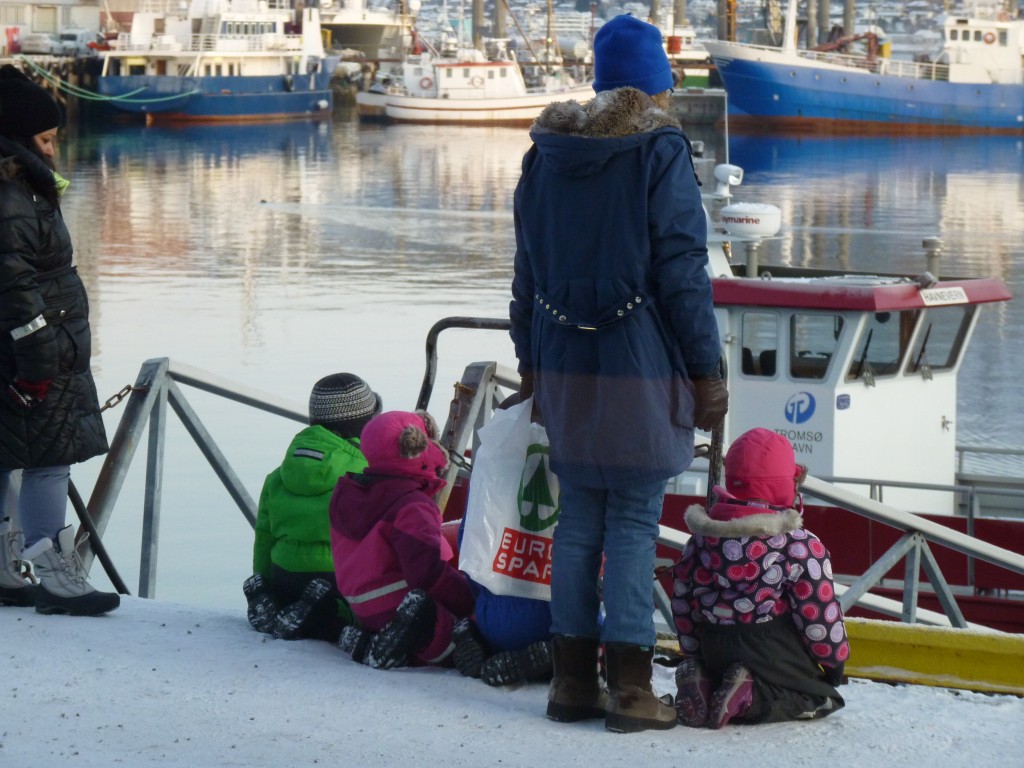
Arctiv development means jobs for the next generation. But can the fragile environment cope? (I.Quaile)
Tackling black carbon
What happens in the Arctic doesn’t stay in the Arctic – and pollution produced in the rest of the world doesn’t stay out of the Arctic.
While the UN has its own body tasked with combating climate change, there are other climate-forcing agents which affect the Arctic particularly strongly, such as black carbon or soot. The Arctic Council sees this as an area where it has a key role to play:
“Black carbon itself is not part of the UNFCCC, so it’s not part of any global regulatory regime. So we are working in the Council on ways to reduce black carbon emissions voluntarily. So I think that’s going to have some very positive results.”
At the end of our talk, I wanted to know whether optimism outweighed concern or vice versa when it comes to the future of the Arctic in our warming world. The answer didn’t surprise me. But the underlying sentiment that in spite of all the tension in the world and the feeling that climate change is gathering momentum and happening ever faster, we all have to pull together, is a message I can subscribe to:
“I think I feel optimistic in a way. Certainly, the melting that’s happening in the Arctic is potentially hugely problematic for the world. I think the science is pretty clear on that front. And it’s not going to change overnight. Even if the Paris Agreement is fully implemented right away, it’s a long time before the Arctic environment can stabilize. But when we have countries working together, if we can keep the conversation going, and we can encourage all of us in the Arctic and Arctic observer states, to work together to keep the conversation going, even if it’s slow, and to keep communication lines working, I think we do have room to be optimistic about that area of the world.”
The next 20 years are not likely to be less challenging than the last for the Arctic Council. On the contrary. You have your work cut out for you. Good luck – and happy birthday.
China, USA climate pledge – all talk, no action?

Arctic interest: China maintains a research station in Ny Alesund, Spitsbergen (Pic: I.Quaile)
In a blog post earlier this year, I mused on the danger of everybody sitting back saying, “Yes, we did”, while the planet continues to break all temperature records and fossil fuel emissions continue to rise, now that all the hype surrounding the Paris Climate Agreement in December has worn off. Back to business as usual?
It’s now September and China and the USA have made the headlines telling us they are ratifying the agreements. Of course nine months (since Paris) are tiny grains of sand in the giant egg-timer of planetary evolution. (Have those egg-timers themselves been consigned to the museum in our digital 21st century? Not important). But then again, we humans have “hotted up” the pace at which our climate, planet, atmosphere, ocean are changing dramatically.
Fireworks display or starting gun?
So how do I feel about the US-Chinese announcement? I wish I could say this makes me rejoice. Sure it’s a step in the right direction. And without action by these two top climate abusers, everybody else’s efforts would basically be worthless.
The agreement must be ratified by 55 parties representing 55 percent of total global emissions to enter into force. We are now at something like 25 parties and 40 percent of emissions, which gives ground for hope the agreement could enter into force by the end of the year.
But the proof, of the pudding lies, as always, in the eating.
The drivers of change
I have been convinced for some time that crippling air pollution will drive China to move away from fossil fuels.
I think back on an interview I recorded with Chinese expert Lina Li from the Adelphi thinktank in Berlin, when she told me she thought China’s air pollution problem would speed up the country’s ratification and implementation of the Paris Agreement. You were right, Lina!
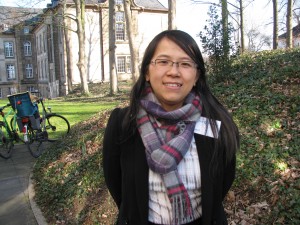
Lina Li from the Adelphi think-tank told me pollution concerns could speed up China’s climate action (Pic. I.Quaile)
As far as the USA is concerned, the outcome of the forthcoming election is clearly the key factor in determining how fast – or even whether – that country will move forward.
Doom and gloom?
Working on my Living Planet show for this week, I have been listening through reports on the Kuna people off the coast of Panama losing their island home to the waves, and how people in northwestern Kenya are starving because of changed rain patterns.
Forest fires, communities getting ready to “abandon home”, more extreme storms and flooding – these are all becoming so commonplace they are threatening to lose “news value”.
The CO2 concentration in the atmosphere is still climbing steadily. The global temperature is already one degree Celsius higher than it was at the onset of industrialization. That means very rapid action is needed to keep it to the agreed target of limiting warming to two degrees and preferably keeping it below 1.5 degrees.
A long, long way to go
Yes, the Paris Agreement was hailed widely as a breakthrough, with all parties finally accepting the need to combat climate change by reducing emissions of greenhouse gases. But so far, the emissions reductions pledged would still take the world closer to a three-degree rise in temperature.
Earlier this year, the International Energy Agency (IEA), issued a warning that governments can only reach their climate goals if they drastically accelerate climate action and make full use of existing technologies and policies. I wish I could say I could see this happening fast.
In my programme this week, I also have an interview my colleague Sonya Diehn conducted with Luke Sussams, from the UK-based think tank “Climate Tracker Initiative”. That is the group that came up with the term “stranded assets” which, in turn, inspired the Divestment movement.
He explains how it makes sound economic sense to shift investment out of coal and oil and into renewables. He thinks the clear advantages – less pollution, no greenhouse gas emissions, lower costs – are the best arguments to convince developing countries to “leapfrog” the fossil fuels stage and get into green energy – and into decentralized, off-grid solutions in a big way.
It’s the economy, stupid?
It seems those economic arguments are what we need. He cites the case of Rockefeller divesting from EXXON only after years of trying to convince them to change their policy on climate change. First, he argues, we should try to change things from within. If that fails, divestment may be the next option.
At the risk of seeming cynical, I have long believed that money is the key to saving the climate. The transition to a low-carbon economy is underway, but it will only succeed when governments and companies – and ultimately also consumers – realize it benefits their coffers and their pockets.
The technology is there. I am very doubtful about whether we will manage to get emissions to peak in time for us to keep to the 1.5 degree target which scientists have me convinced is what we need to do.
It seems we will need to move on to take some of the carbon out of the atmosphere using technologies now being tested – but no way ripe enough for mass implementation. I remember a Guardian interview with IPCC chief scientist Hoesung Lee a couple of months ago. He says we can still keep to the two-degree target, even if emissions do not peak by 2020, as ex- UN climate chief Christina Figueres maintained.
But he warned the costs could be “phenomenal”. He believes expensive and controversial geoengineering methods may be necessary to withdraw CO2 from the atmosphere and store it.
Meanwhile, that giant cruise-ship, the Crystal Serenity, is half-way through its controversial trip via the Northwest Passage. The operator says the trip is so successful and interest is so high they will do it again next year. They are unlikely to be foiled by a sudden onset of global cooling.
In scientific circles, the alarm bells are ringing over rising emissions from melting Arctic permafrost.
Did somebody say something about feedback loops and tipping points? Or do we just carry on regardless?
Olympics over, but Arctic ice still chasing records
The Rio games have come to an end. Summer is drawing to a close here in Germany. It feels more like autumn today, cool with heavy rainshowers. But there’s a heatwave around the corner after what most people agree has been a very strange summer.
July followed in the record-breaking trend of the earlier months of the year, being the hottest month ever recorded on the planet.
![]() read more
read more
Alpine ice – no more than a memory? New archive of ice cores
Alpine glacier – endangered species? (Pic: I.Quaile)
It was with mixed feelings that I read an article drawn to my attention by a colleague earlier in the week.
“Protecting Ice Memory” is the subject –a description of a new project to create a “global archive of glacial ice for future generations”.
I am generally enthusiastic about all projects concerning ice. The worrying thing is the reason why this project has been deemed necessary.
History melting
“The goal is to build the world’s first library of ice archives extracted from glaciers which are threatened by global warming”. There we have it. Another frightening acknowledgement of the extent and speed of global change.
How sad that our human-induced warming is threatening our ice, especially here in the European Alps, where we do not have as much ice as in some other parts of the globe. How good that we have the technology to save some of it for posterity. How frustrating that while we also have the technology to shift to a zero-carbon economy and stop the ice melting, we are not actually doing it anything like fast enough.
Starting on Monday August 15th and carrying on until early September, an international team of glaciologists and engineers (French, Italian, Russian and American) will be travelling to Mont Blanc, in particular to the “Col du Dome” glacier area, which is 4,300 metres or 14,108 feet up. They will be drilling the first ice cores for the “Protecting Ice Memory” project.
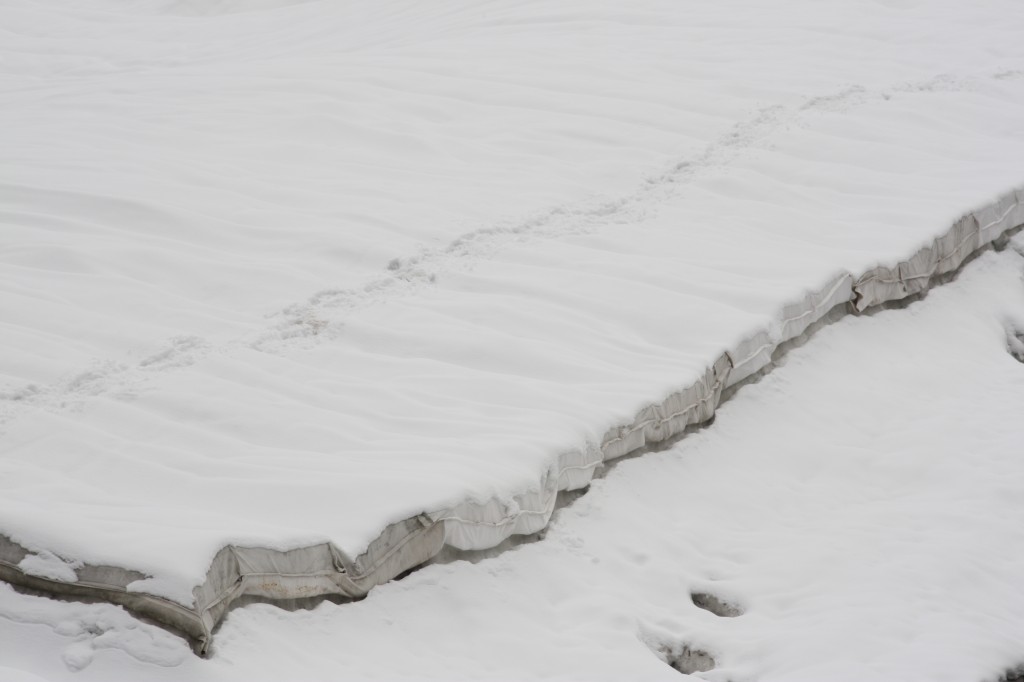
Some glaciers are being covered in summer to stop them melting, this one I saw in Switzerland. Proved ineffective. (I.Quaile)
Saving the cores
The team will be coordinated by Patrick Ginot from the French Research Institute for Development (IRD), working within the UGA-CNRS Laboratory of Glaciology and Environmental Geophysics (LGGE), and Jerome Chappelaz, director of Research at the CMRS and working within ths same laboratory.
The team will be extracting three ice cores each 130 metres long. These will be taken down by helicopter and taken to the LGGE in Grenoble. Clearly they will have to kept very cold during the process.
In 2019 (why only then, I wonder?), one core will be analysed to start a database which is ultimately to be made available to the whole world scientific community.
The other two will be transported by ship to ANTARCTICA. Yes, you read correctly. There, they will be taken on tracked vehicles across the high plateaus to be stored at the Concordia station, which is run by the French Paul-Emile-Victor Polar Institute (IPEV) and its Italian partner, the National Antarctic Research Programme (PNRA)
In the long term, dozens of ice cores are to be stored in a snow cave at -54° Celsius, which the project describes as “the most reliable and natural freezer in the world”.
The Mont Blanc glacier is the first step. The next will be carried out in 2017 on the Illimani glacier in the Bolivian Andes.
Global operation
It seems other countries with access to glaciers are also hoping to join the project, including Germany, Austria, Switzerland, Brazil, the USA, Russia, China, Nepal and Canada. That sounds like a real mega-project.
I have commented often enough here on the Ice Blog on the dwindling ice in my own favourite hiking territory in the German and Swiss Alps. Last week it was the turn of the New Zealand Alps to be the focus of this rather sadly motivated attention.
The scientists who came up with the project had the idea after observing a rise in temperatures on several glaciers. At ten year intervals, they say the temperature near the glaciers on the Col du Dome and Illimani in the Andes has risen between 1.5 degrees and 2 degrees (Those figures sound familiar from somewhere…)
“At the current rate, we are forecasting that their surface will undergo systematic melting over the summer in the next few years and decades. Due to this melting and the percolation of meltwater through the underlying layers of snow, these are unique pages in the history of our environment which will be lost forever”, says the project description.
The scientists compare their project to the Svalbard Global Seed Vault on the Norwegian Arctic island of Spitsbergen. Before I read that part, this very comparison had already come to my mind. I had a rare opportunity to visit that vault a couple of years ago.
Svalbard to Antarctica
But one of the very worrying things in that connection is that even that “secure coldspot” has in turn been affected by permafrost melt – at least at a level close to the surface, which caused damage to the entrance area in the early stages.
Will the Svalbard vault ultimately have to be moved to the even colder Antarctic at some point in the future, one might wonder?
I remember a visit to the Alfred-Wegener Institute in Bremerhaven, Germany’s polar agency. One of the highlights was a look into the laboratory where ice cores are processed. Clearly, these provide invaluable evidence of how our planet and life on it have developed. Climate and environmental archives of a quite unique nature.
“Our generation of scientists, which bears witness to global warming, has a particular responsibility to future generations. That is why we will be donating these ice samples from the world’s most fragile glaciers to the scientific community of the decades and centuries to come, when these glaciers will have disappeared or lost their data quality”, says Carlo Barbante, the Italian project initiator and Director of the Instutite for the Dynamics of Environmental Processes – CNS, Ca’Foscari University of Venice”. What a sobering thought – and a daunting task.
And what an inspiring campaign to rescue what it seems we will not be able to save in time in the natural world.
Projects like this cost a lot of money. It is relying on private sponsors. The current European project has funding. The Université Grenoble Alpes foundation is now running a campaign to fund the Bolivian expedition.
Here’s hoping the money will be forthcoming.
And here’s hoping the international community will speed up efforts to halt global warming before we have to create archives to try to document all the ecosystems, species and habitats we are losing faster than we can count them.
New Zealand glaciers on the retreat
During my first trip to Australia around 25 years ago, I was standing outside a phone box (there are still such things even in this smartphone age) one evening, in a chilly wind.
“That wind’s coming straight up off the pole”, a local told me. Up off the pole? That was a weird image for a visitor from the northern hemisphere. It figures, the wind blows up rather than down from the pole when you’re at the other end of the world.
A few years later, during a visit to New Zealand, I was tickled to find there were “alps” to visit, with glaciers, reminiscent of some of my favourite hiking territory in Switzerland. I haven’t heard much about them since.
There hasn’t been much about New Zealand in the media here in Europe, except when earthquakes strike, or – the latest popular summertime story – the decision to exterminate all “alien” predators like mice, rats and possums.
But this week I came across a story by the New Zealand Herald on Twitter, entitled “warning sounds for vanishing glaciers”. Needless to say this set the alarm bells ringing with the Iceblogger.
It seems these beautiful icy regions have also been affected considerably by climate warming.
Rapid retreat
The South Island of New Zealand is home to snowy mountains and picturesque glaciers. The article by Jamie Morton describes how the glaciers have been retreating massively since 2011. The pictures, taken by Brian Anderson of Victoria University’s Antarctic Research Centre, show a dramatic change. The latest measurements for Fox Glacier and Franz Josef Glacier, the ones I visited, show they have “shrunk to record levels”, the article quotes Dr. Anderson.
I must delve into my photo archive at home for pics taken when I was there in 2000 and compare them with the latest. I have the feeling the comparison would be a sobering one.
Twice a year, scientists conduct surveys of the snowlines and glacier retreats in New Zealand’s Southern Alps. The measurements take place at the end of winter, and again at the end of summer.
The scientist says the snow accumulation on the glaciers was average in winter 2015, but high by the end of the very warm summer in 2016.
In the last five years, it seems the Fox Glacier has retreated 750 meters, the Franz Josef as much as 1.5 kilometres.
The ice volume in the Southern Alps has decreased from 170 cu km in the 1890s to a current 36.1, and is predicted to go down to between 7 and 12 cu km, by 2100. Yikes.
The last dramatic loss of ice was during the summer of 2010/2011, under the influence of a strong La Nina climate system – one of the strongest ever recorded, according to Jamie Morton. The latest ice loss appears to be similar in amount.
“Based on regional warming projections of 1.5C to 2.5 C, it has been projected by glaciologists Valentina Radic and Regine Hock that just 7 to 12 cu km of ice would remain on the alps by the end of this century, Morton writes.
The snowline has also moved up to “exceptionally high levels”, Morton quotes Dr. Andrew Lorry from the National Institute of Water and Atmosphere (NIWA).
Warming water, melting ice
The article says before last summer, the experts expected the El Nino to have a major impact. But instead, it was unseasonably warm sea surface temperatures in the Tasman Sea, bringing warmer air over land, that caused the damage.
With temperatures higher than average so far this season, it seems likely more ice and snow will be melting.
Are we surprised by all this? Perhaps not. Concerned? Saddened? Definitely. Clearly the cold wind blowing up off the south pole, like the one blowing down from the north, is no longer enough to secure those icy areas of New Zealand.
Of course emissions reductions have to take place across the board. Local melting is not only caused by local actions. Still, countries who profit from their ice and snow, like New Zealand, where the alps are an important tourist attraction, can be expected to set a good example in implementing measures to halt the warming. The “Climate action tracker”, an independent science-based assessment of country’s emissions targets and actual action, rates New Zealand’s INDC 2030 target as “inadequate”. That means its commitment is not in line with a “fair” approach to reach a 2° C maximum temperature rise pathway.
“If most other countries followed the New Zealand approach, global warming would exceed 3–4°C”, the website says.
Maybe I better not wait too long for another visit to those New Zealand glaciers. At this rate, I will hardly even need my snow boots.
Redundant? (Pic: I.Quaile)




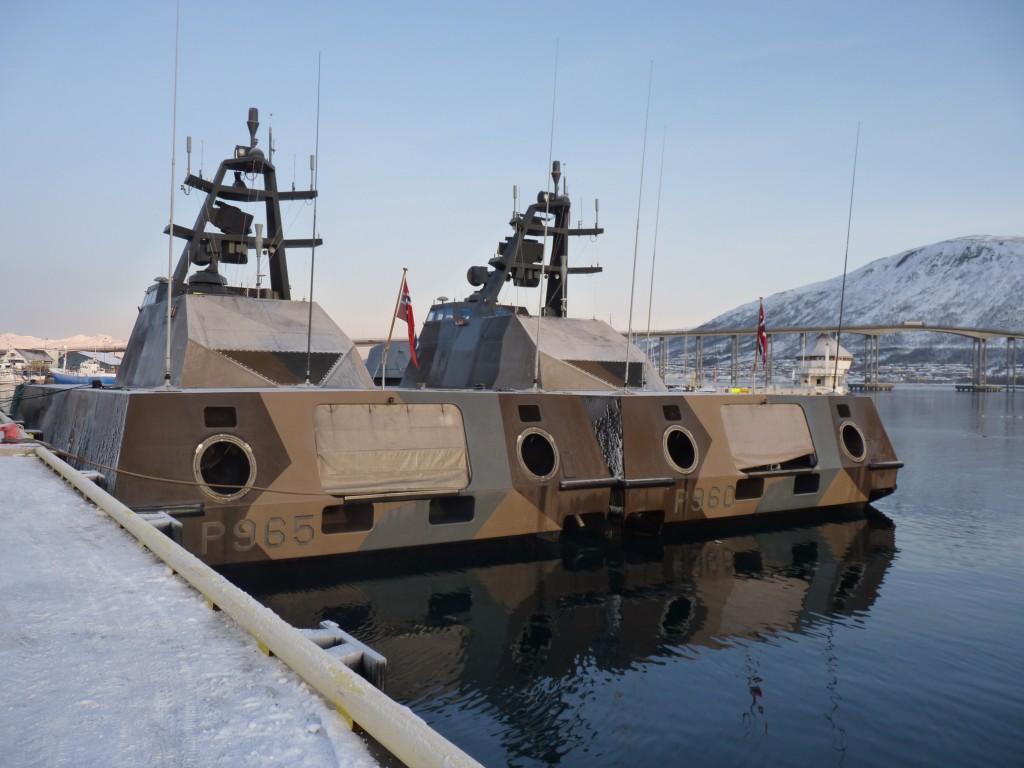
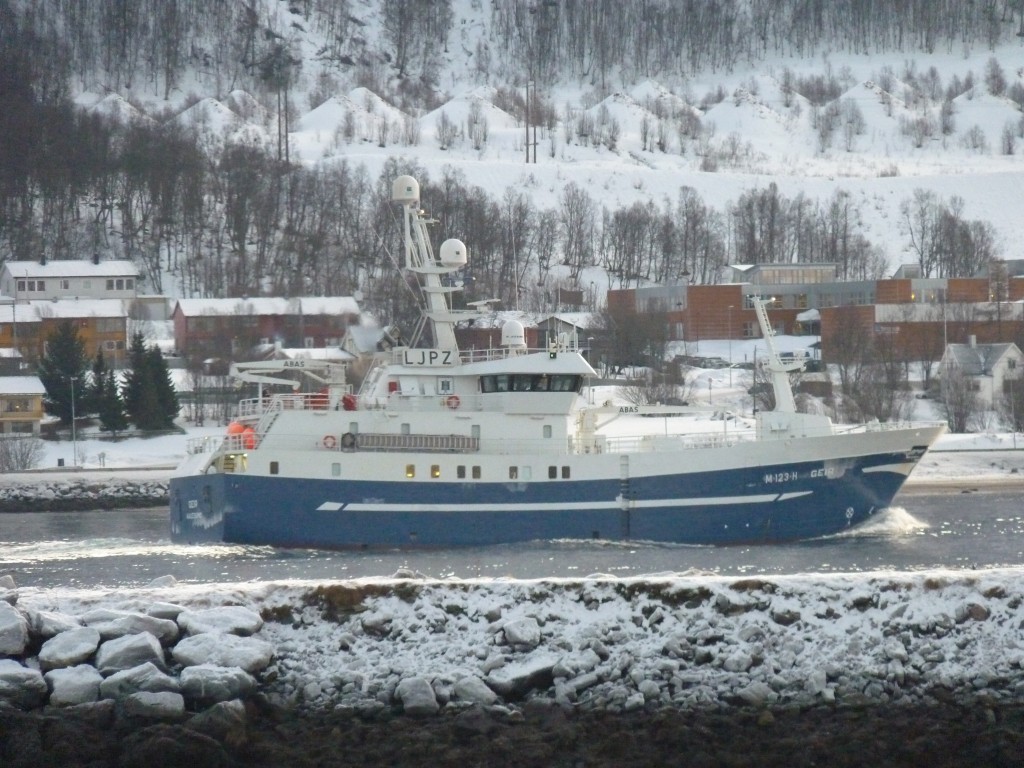



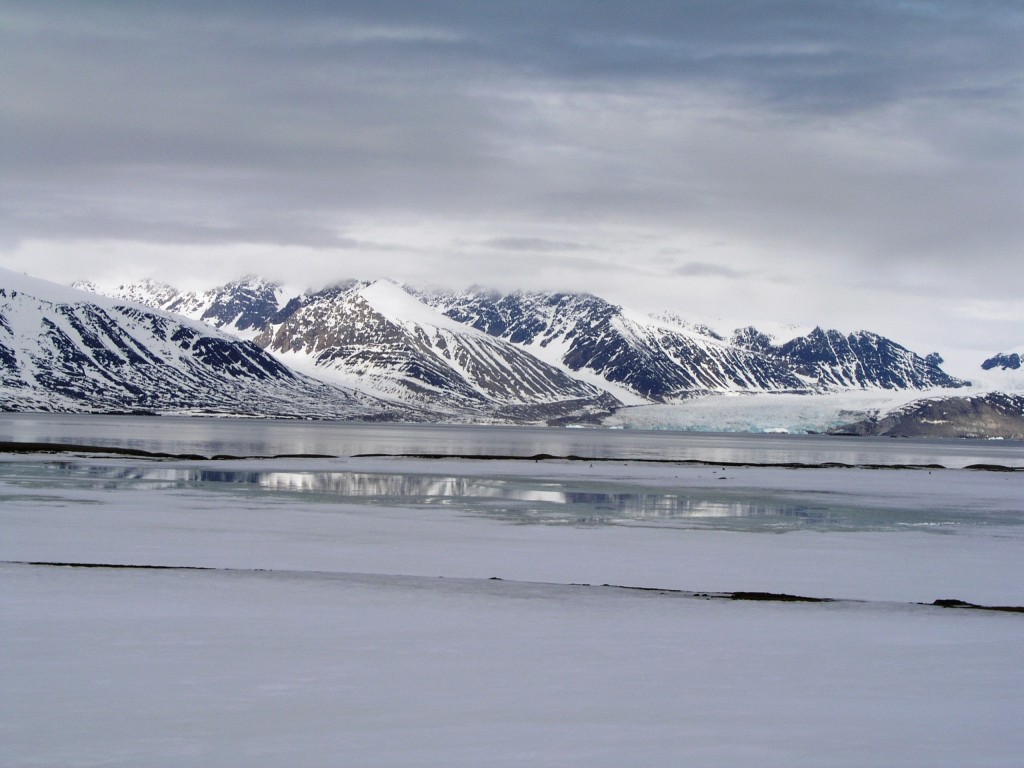

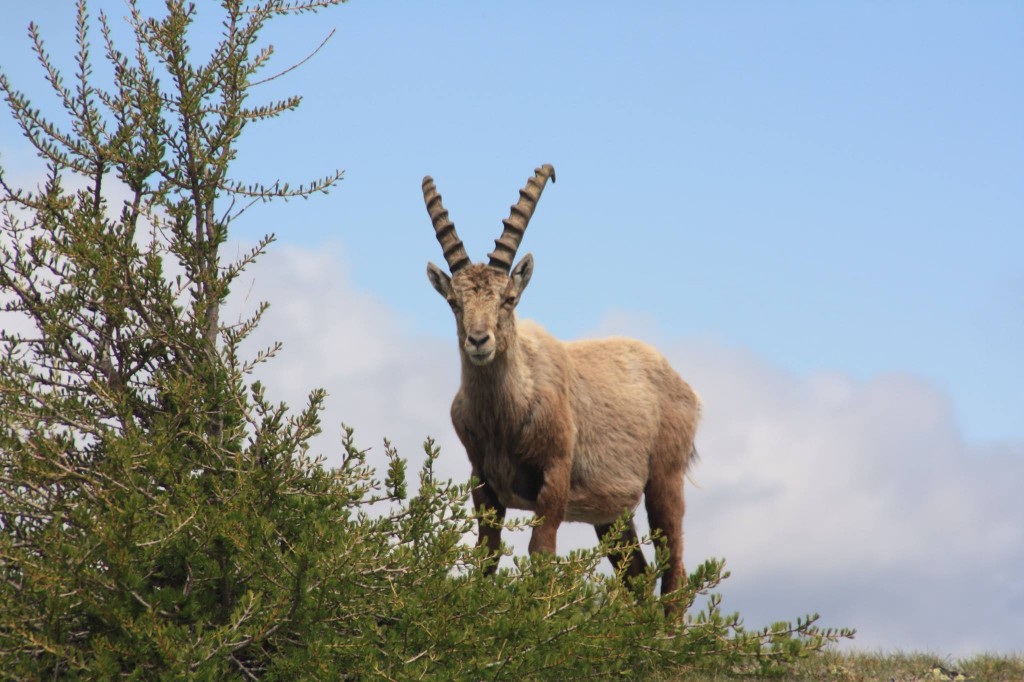
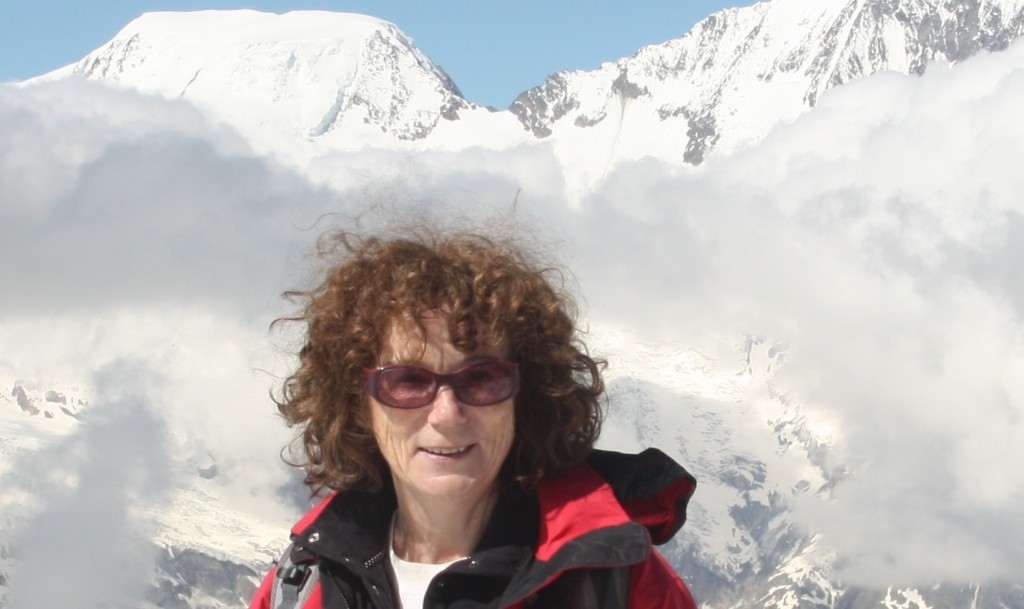

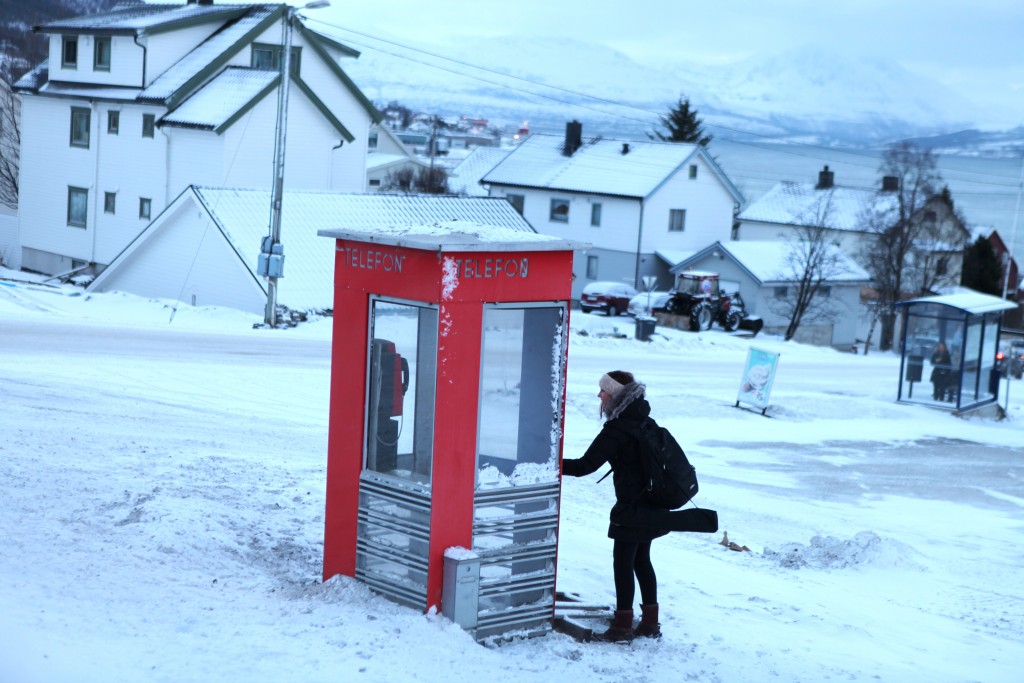

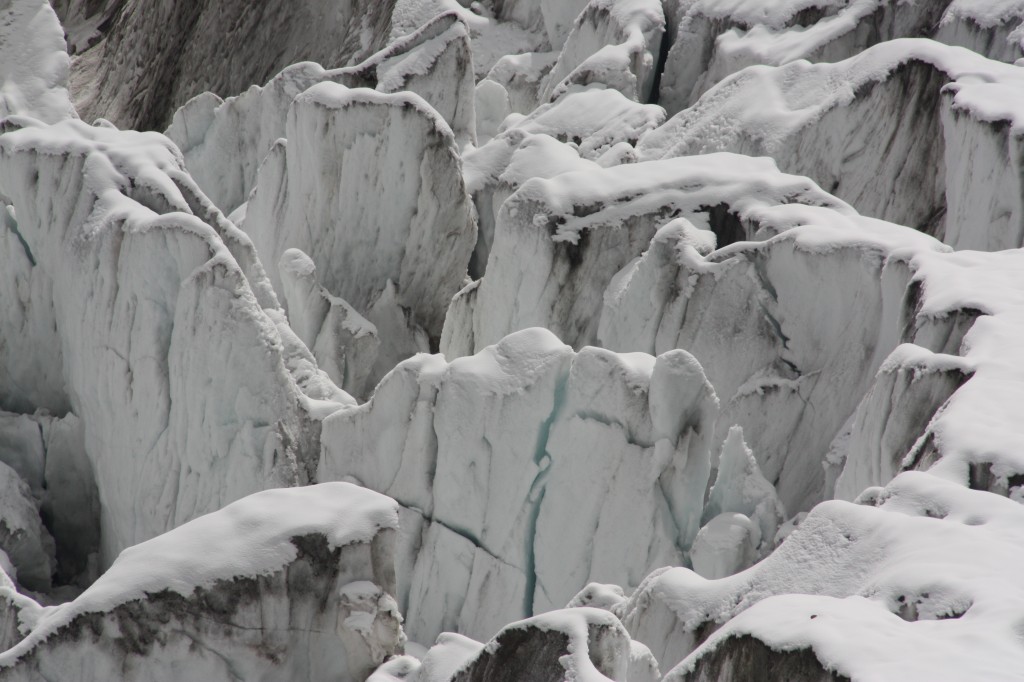
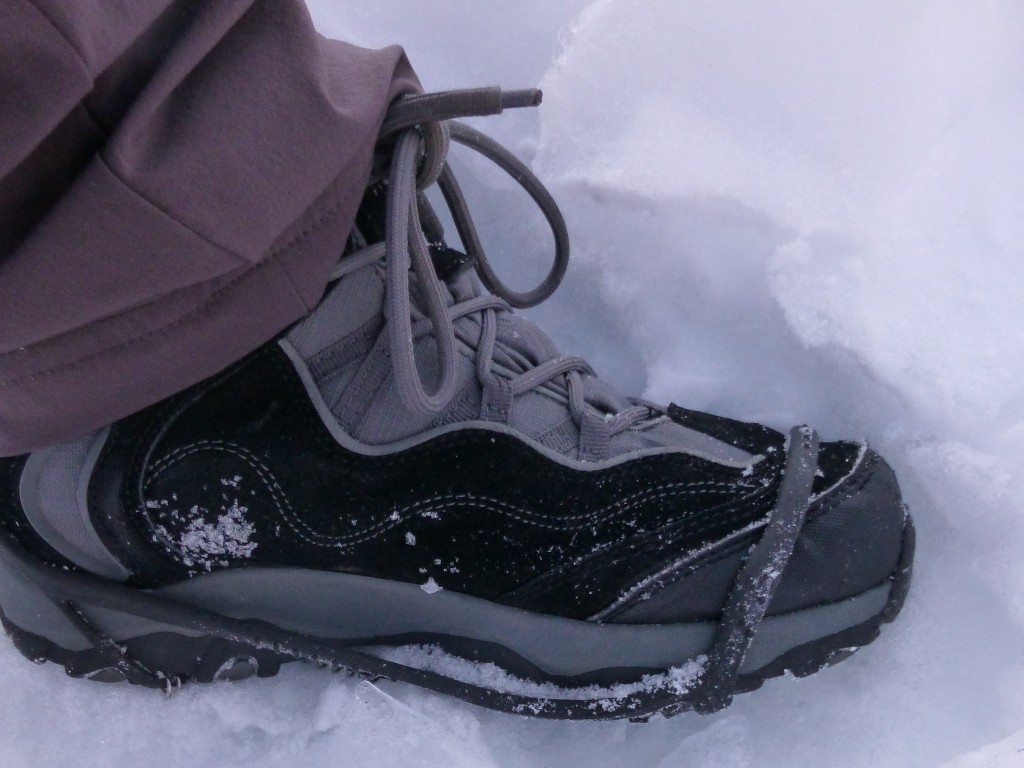
















Feedback